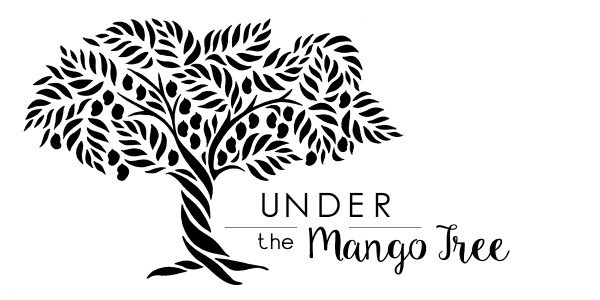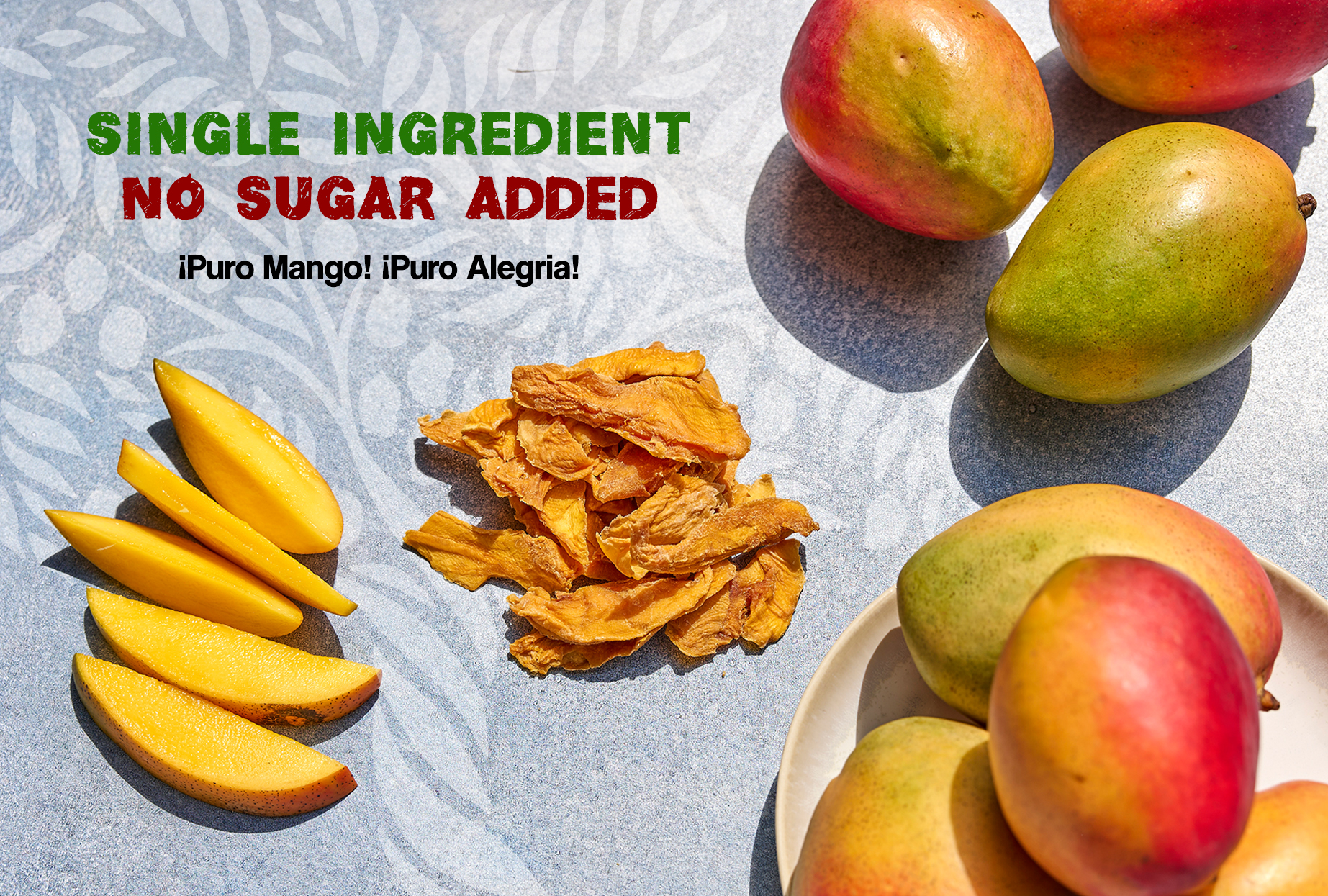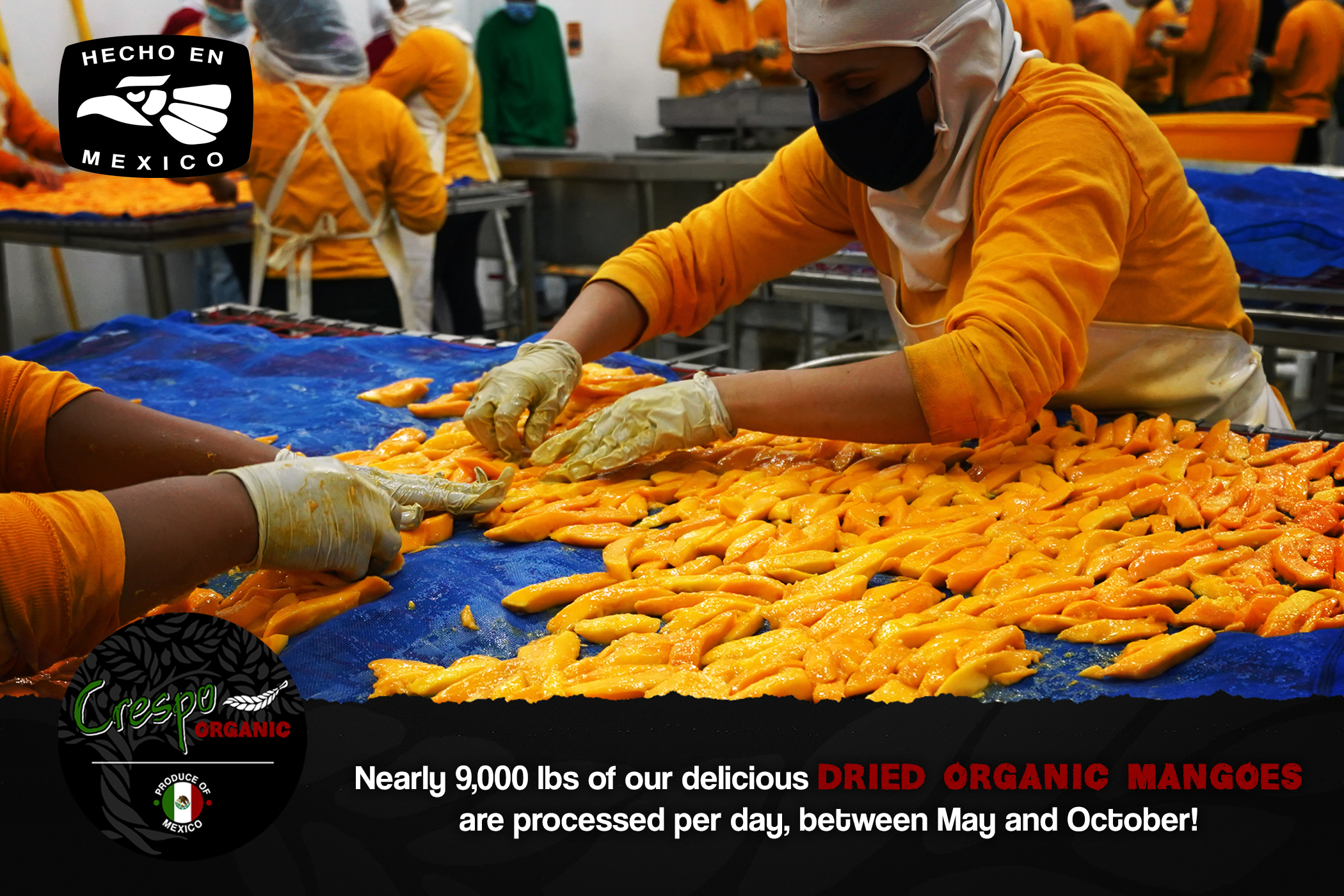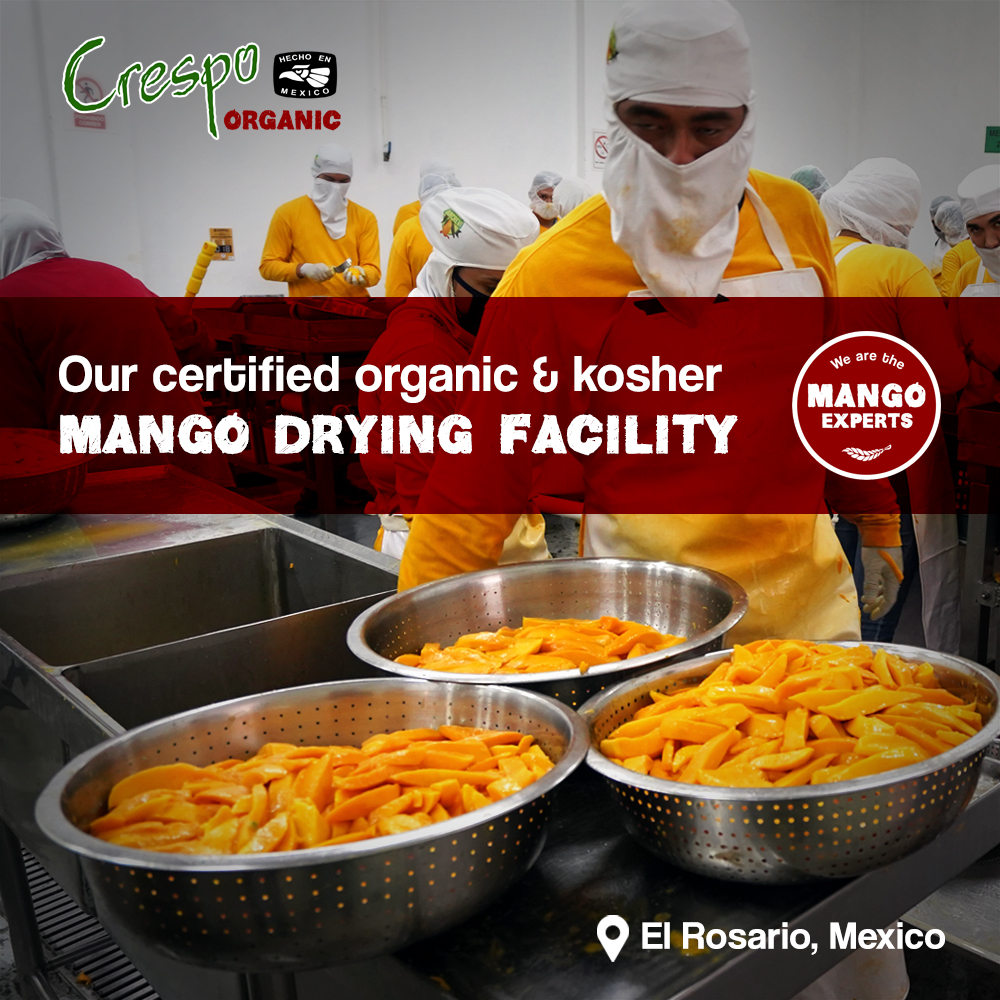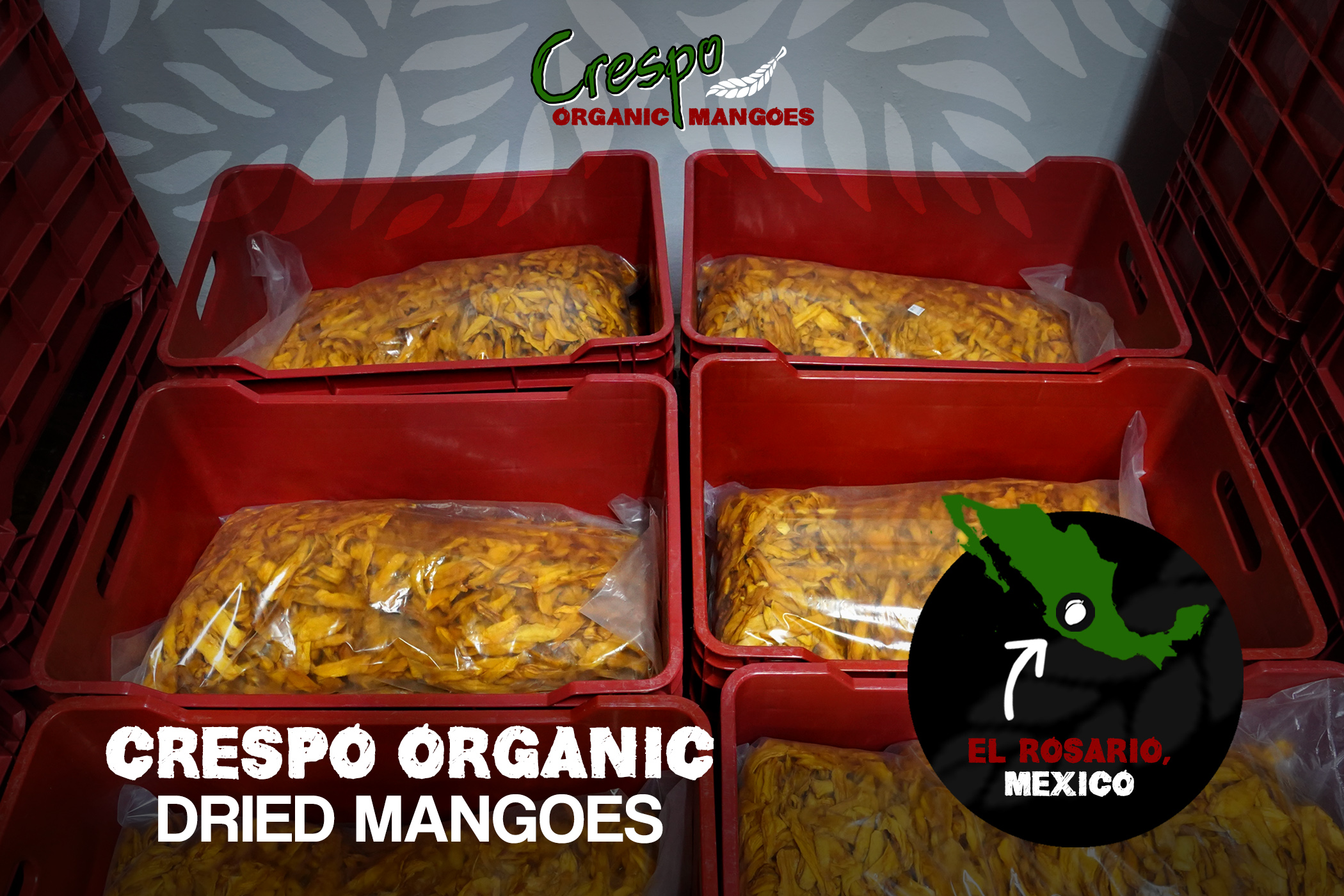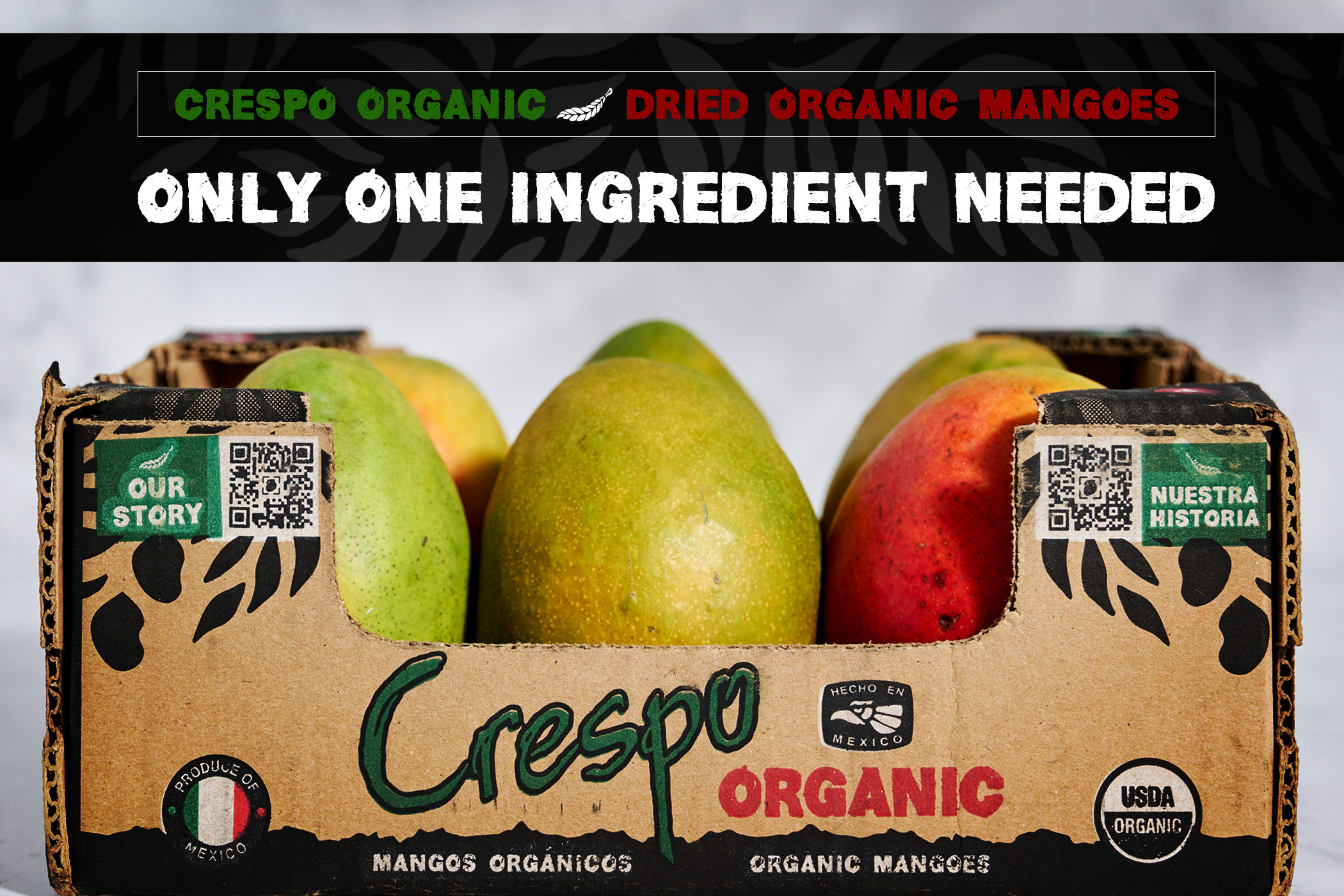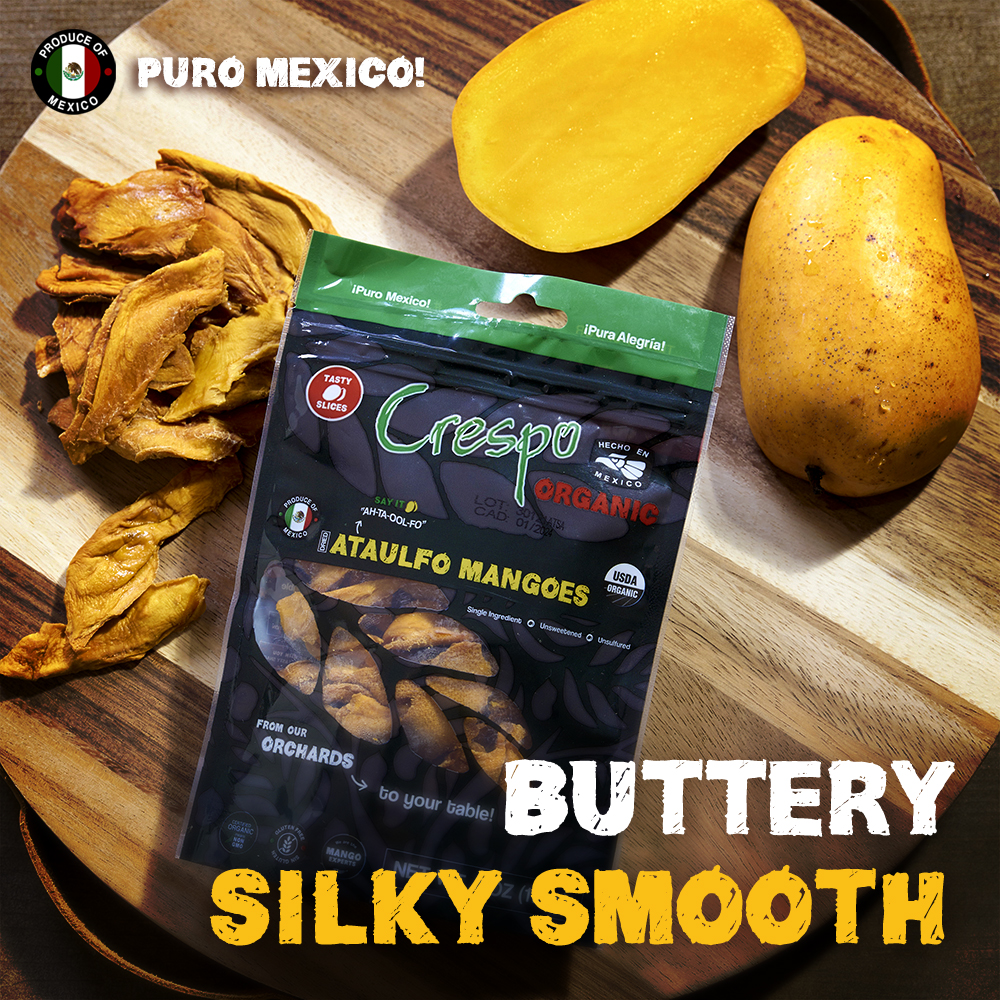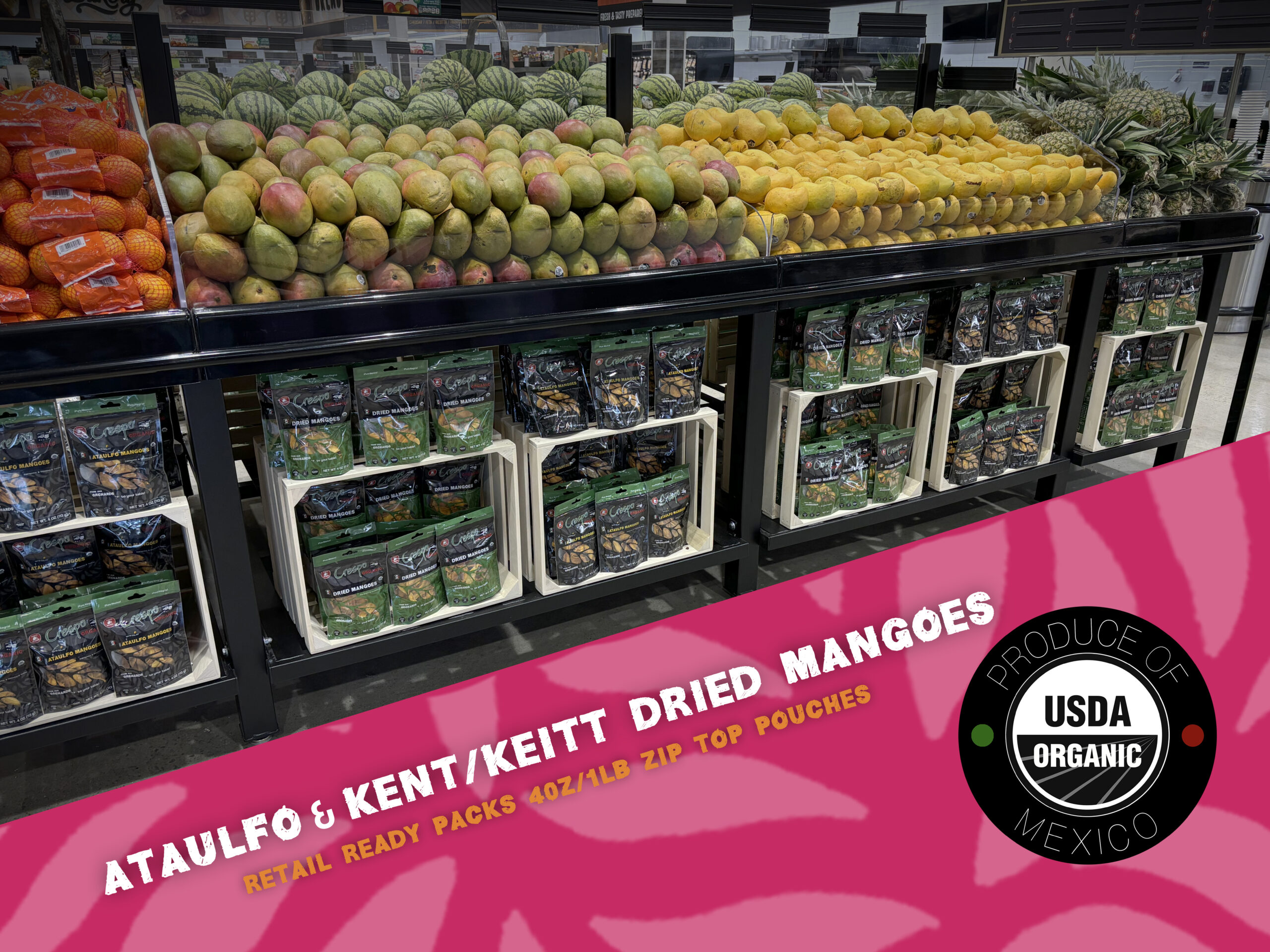Dried Mango Crop Report
The 2025 Crespo Organic Mexican dried mango season is progressing with strength and precision. We started our drying operations early this year—back in May—with fruit from the southern regions, mostly Ataulfos, along with a small Tommy Atkins trial for processing. Kent drying began in early June, slightly later than expected but consistent with recent seasonal trends. Climate shifts, driven by ongoing drought, are now pushing Kent seasons to start later and end earlier, shrinking the available drying window in Sinaloa. This increasingly compressed and unpredictable window makes it harder for producers to achieve consistent results—requiring the kind of experience, precision, and operational expertise we’ve honed over years to keep delivering at the highest level in a growing category.
We’re now past the peak of the drying season, with Kents complete and Keitts in the final stretch. The Crespo Organic output for the 2025–2026 crop remains strong and on schedule despite the inherent challenges of this category. Several customers—private label, bulk, and Crespo Organic retailers—are already receiving new-crop product, and quality is excellent.
One of our greatest strengths lies in our highly mechanized main packhouse, where we’ve invested heavily in state-of-the-art machinery. This level of modernization and advancement enables us to pack more efficiently and quickly, meeting the growing orders we’ve contracted for every SKU. Our ability to process large volumes with precision ensures we can keep pace with demand, even during the most intense of fruit seasons.
We are on schedule to hit all of our internal benchmarks, while staying realistic about the limitations that exist in dried mango right now—insatiable demand and rising costs continue to shape one of the most sought-after dried fruits in the market.
As demand for high-quality organic dried mangoes continues to rise, our ability to process multiple varietals—Kent, Keitt, and Ataulfo—remains a major advantage. The popularity of our dried Ataulfo SKU continues to grow, and we’re also exploring new varietal trials, including Tommy Atkins for processing, to better understand how we can expand category potential within the realities in front of us. (I have a personal dream of dried Mallika mangoes, but that’s just my own thing!)
This season, like the few before it, fruit from Nayarit arrived late, and the Sinaloa crop is maturing quickly under warmer, drier conditions. There’s significant pressure not only to fulfill pre-programmed volumes—most of which were contracted last fall—but also to meet continually rising demand. In this category, it’s a constant: everyone always needs more. Dried fruit demand is accelerating across the board, with dried mangoes leading the surge. Private label and branded programs are expanding rapidly, and usage is growing across product categories—from snack packs and energy bars to an ever-widening range of food items. This momentum or demand on Mexican organic dried mangoes is further fueled by instability in other origin countries and by growing consumer preference for clean, organic, single-ingredient products, as the market moves further away from sugar- and preservative-laden alternatives.
Growth is essential—fast enough to keep up, but paced with purpose. The goal has always been clear: build a direct-trade dried mango program that serves both ends of the chain. One where consumers get the transparency and quality they’re asking for, and the Crespo family’s hometown community in El Rosario gets sustainable, long-term work and dignity through decent jobs. That’s what it’s always been about.
We’re now operating from two drying facilities in El Rosario, adding an additional packhouse this season to support the steady volume increases we’ve taken on—thanks to the consistency and quality of our output, which is neither easy nor cheap to maintain.
Our main drying facility, Santiago Deshidratados, is currently running at peak efficiency. With fully mechanized systems and state-of-the-art sorting and packing lines added last season, we’re producing superior product at remarkable speed—targeting customers who demand the best. If you’ve tasted our dried mangoes, you know exactly what I mean.
This expanded capacity is essential for ensuring consistent supply through the year, until next season. The second facility, Lizbur, is currently focused on our extra bulk and processing, while Santiago handles more detailed private label and retail programs. Santiago’s automation allows for larger-scale drying and precision sorting—capabilities Lizbur will soon scale into as well.
While field prices are up and fruit sizing has been less than ideal, Crespo Organic’s vertically integrated system ensures flexibility and quality at every stage—from orchard to drying to distribution. Our direct-trade model extends into the dried category just as it does with fresh, with the goal of stewarding the supply chain from orchard to table. We work closely with wholesale and retail partners to create the most efficient route from ours to theirs, ensuring both quality and consistency.
We’re currently in the sorting and packing phase, on track for October completion. Product will ship directly to partners or enter storage at our Nogales facility, the core distribution point for Crespo Organic’s dried program in the U.S. The general dried mango season in Mexico usually moves from May – the end of October.
With Peru still stabilizing after several low-yield seasons and ongoing tariff challenges, Mexico continues to carry significant volume pressure for North America. We don’t yet know what will happen with potential Mexican tariffs, but we’re grateful we haven’t had to endure them thus far—and appreciative of the current 90-day reprieve while politics, hopefully, works some magic in our favor.
Other producing countries are waking up to the rising global demand for organic dried mangoes, but many still lag in both certification and consistency. Meanwhile, consumers are becoming more aware of what’s actually in their dried fruit—recognizing the difference between clean, transparent products like ours and the cheaper, sugar- and preservative-laden options, often much older by the time they hit the retail shelf.
Like in the fresh sector, our direct-trade system exposes the inefficiencies of outdated brokerage models, which often hold product longer, increase costs for everyone, and ultimately deliver inferior quality. By contrast, our model is built on strong, long-term partnerships with wholesale and retail customers, encouraging cooperation at every stage, from orchard to table, to ensure the best economic and quality outcomes. These partnerships make it possible to move product efficiently from grower to retailer to consumer—maximizing freshness, reducing waste, and creating success for all sides.
Our advantage is clear: certified organic, single-ingredient dried mangoes, processed fresh from the current season’s harvest, every year. This is the direct-trade advantage for the eater and the growing communities in Mexico.
